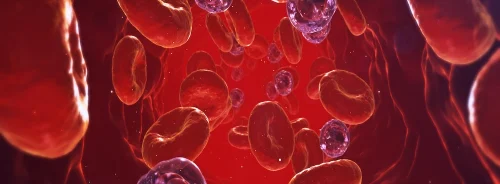For many years, the right ventricle (RV) was largely neglected in the consideration of left-sided heart failure. However, it is now increasingly recognised that right ventricular dysfunction (RVD) is common and contributes to poor prognosis in patients with left-sided heart failure with preserved ejection fraction (HFpEF). Better insight into the mechanisms causing the development of RVD and its clinical role in HFpEF may aid to our knowledge about this complex disease and may eventually lead to better treatments to improve outcomes in these patients, according to a position paper from the Heart Failure Association of the European Society of Cardiology.
Right heart failure is a clinical diagnosis with signs and symptoms of systemic congestion in combination with structural and/or functional abnormalities of the right heart. Right heart failure may be caused by RVD itself or RV remodelling, including annular dilatation causing tricuspid insufficiency and right atrial dysfunction. These changes ultimately cause symptoms of exertional dyspnoea and reduced exercise capacity and/or signs of right-sided decompensation such as jugular venous distension, hepatomegaly, ascites, and peripheral oedema.
In contrast to left-sided heart failure, there is currently no clear staging of right heart failure, although attempts have been made to develop a staging system. For right heart failure in the setting of HFpEF, the paper authors propose a staging system of RVD and right heart failure. However, the proposed staging system needs further validation in a prospective setting.
The paper says a correct and complete assessment of left ventricular (LV) diastolic function (E/A, e', E/e' and left atrial size) is important to diagnose RVD in the setting of HFpEF, because in some cases there is a discrepancy between the severity of LV diastolic dysfunction and RVD.
The assessment of the right heart using echocardiography may be challenging, due to its complex geometry, limited echocardiographic windows and high prevalence of obesity and chronic obstructive pulmonary disease (COPD) in HFpEF, according to the paper. Hence, cardiac magnetic resonance (CMR) imaging is increasingly being used and is currently recommended (class IC) in patients with suspected or established heart failure with poor acoustic window, for the assessment of myocardial structure and function (taken into account for cautions/contra-indications to CMR). Reduced RV ejection fraction on CMR is associated with worse prognosis in HFpEF, and <45% is most commonly used as cut-off for RVD.
The most important mechanism of RVD in HFpEF is contractile impairment and afterload mismatch in the setting of pulmonary hypertension (PH)-HFpEF, the paper explains. LV diastolic dysfunction and loss of left atrial compliance in the setting of HFpEF impose a pulsatile load on the pulmonary venous system leading to a ‘passive’ increase in pulmonary pressure. Clinical features that are suggestive of HFpEF in patients with suspected PH include older age, typical co-morbidities such as atrial fibrillation (AF) and obesity, and left atrial dilatation.
"Pulmonary hypertension is a common finding in patients with HFpEF, and is associated with worse symptoms, reduced exercise capacity, higher natriuretic peptide levels, and increased hospitalisation rates and mortality," the paper notes.
A cornerstone in the current management of symptomatic patients with HFpEF, particularly those with signs of right heart failure, is adequate volume management.
"Excessive volume overload is a major driver of decompensation, deterioration of RV function and multi-organ dysfunction (e.g., hepatic, renal, and splanchnic dysfunction). In clinical practice, in many patients with RVD-HFpEF diuretics are not given in sufficiently high dosages to ensure decongestion/euvolaemia, and early identification of patients who are at risk for diuretic resistance is important. In addition, patients should be counselled to avoid excessive fluid and salt intake," the paper explains.
The document also discusses potential treatment strategies, including drugs and experimental treatments. "Prospective studies are urgently needed to clarify the mechanisms underlying right heart remodelling and dysfunction, and to provide effective treatments that improve morbidity and mortality in HFpEF," the paper concludes.
Source: European Journal of Heart Failure
Image Credit: Pixabay
Latest Articles
ESC, HFPEF, Right heart failure
Better insight into the mechanisms causing the development of RVD and its clinical role in HFpEF may aid to our knowledge about this complex disease and may eventually lead to better treatments to improve outcomes in these patients, according to a positio










